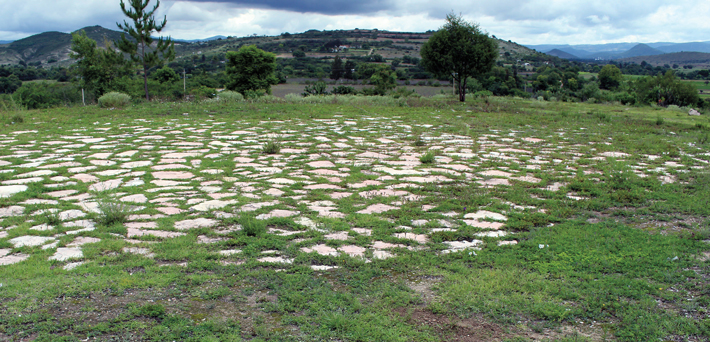Play Ball!
July/August 2020
 The discovery of a 3,400-year-old ball court in the southern Mexican state of Oaxaca has led archaeologists to reconsider the origins of a popular ancient Mesoamerican sport. Although several different types of ball game were played by the Olmecs, the Maya, and the Aztecs, the best-known version was contested on a monumental stone court and involved players knocking around a rubber ball using their hips. (See “From Head to Toe in the Ancient Maya World: Headdresses.”) The earliest evidence for these ball courts dates to around 1650 B.C. and their prevalence at sites near the Gulf Coast and in the Pacific coastal lowlands has led scholars to believe that the game was developed in that region. However, recent excavations at the highland site of Etlatongo have uncovered two of these structures, as well as ballplayer figurines, suggesting that highland societies were playing the ball game almost as early as their lowland counterparts. One of the courts dates to between 1443 and 1305 B.C., making it 800 years older than any other playing field previously found in a highland context. “The discovery of these ball courts in Oaxaca indicates that highland groups were important players in the development of the formal ball game,” says George Washington University archaeologist Jeffrey Blomster. “The hip-ball game’s development was an important part of the establishment of Mesoamerican civilizations, and multiple regions were involved in its origin.”
The discovery of a 3,400-year-old ball court in the southern Mexican state of Oaxaca has led archaeologists to reconsider the origins of a popular ancient Mesoamerican sport. Although several different types of ball game were played by the Olmecs, the Maya, and the Aztecs, the best-known version was contested on a monumental stone court and involved players knocking around a rubber ball using their hips. (See “From Head to Toe in the Ancient Maya World: Headdresses.”) The earliest evidence for these ball courts dates to around 1650 B.C. and their prevalence at sites near the Gulf Coast and in the Pacific coastal lowlands has led scholars to believe that the game was developed in that region. However, recent excavations at the highland site of Etlatongo have uncovered two of these structures, as well as ballplayer figurines, suggesting that highland societies were playing the ball game almost as early as their lowland counterparts. One of the courts dates to between 1443 and 1305 B.C., making it 800 years older than any other playing field previously found in a highland context. “The discovery of these ball courts in Oaxaca indicates that highland groups were important players in the development of the formal ball game,” says George Washington University archaeologist Jeffrey Blomster. “The hip-ball game’s development was an important part of the establishment of Mesoamerican civilizations, and multiple regions were involved in its origin.”